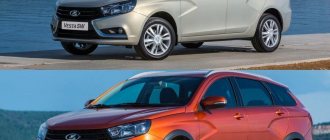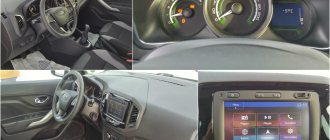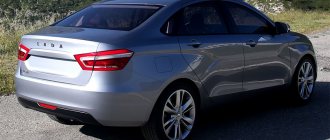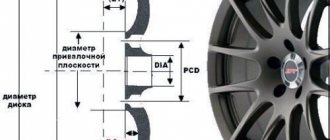Composition, characteristics and principle of action of Movil
The abbreviation “MoVil” was formed from the names of the cities (Moscow and Vilnius) in which this anti-corrosion composition was first created. Now Movil is not a specific product, but a whole direction in the production of anti-rust products, which are produced by various companies in Russia and the CIS countries.
Movil is understood as a universal anticorrosive agent in the form of a liquid, spray, paste of black or dark brown color, intended for treating the body and hidden cavities of the car. The product will also help keep the elements of the machine intact and protect them from rust if it has to be preserved.
The composition of the product is quite complex. It is represented by the following ingredients:
- white spirit solvent;
- paraffin;
- zinc;
- machine oil;
- calcium sulfonate;
- kerosene;
- drying oil;
- modifying additives;
- corrosion inhibitors;
- thixotropic substances;
- additives for displacing moisture;
- deodorizing components.
Movil is suitable for any base materials, fits well on painted and unpainted surfaces, and does not require prior removal of bitumen or mastic insulation. The product is incompatible only with synthetic mastics - the latter become loose and peel off from the base. Rubber products also react poorly to Movil - the composition can damage them.
Thanks to thixotropy, the product quickly flows into the smallest cracks and microscopic chips, fills them and creates an active anti-corrosion film. A thin oily layer prevents the formation of rust, isolating the metal from moisture, air, and aggressive chemicals that cause corrosion. Movil works as a rust converter, eliminating already formed foci due to the presence of special additives.
Different brands of Movili may differ in density, freezing point, and other indicators, but for most products the technical characteristics are close to the following:
- spreadability on metal – up to 10 mm;
- share of volatile substances – up to 57%;
- density – 840–860 kg/sq. m;
- time until complete drying - about 120 minutes;
- corrosion resistance in sea water – 99%.
For what surfaces is Movil anticorrosive agent intended?
Movil with a rust converter can be used on any metal substrates. They are allowed to work on corrosion, as well as on undamaged metal, painted and varnished surfaces. Most often, car owners prefer to use the composition for treating closed cavities and complex elements:
- front roof pillars - condensation accumulates on them, which over time causes rust;
- thresholds - the presence of holes on the parts provokes the penetration of moisture;
- hidden cavities in the trunk - felt can accumulate water, which increases the risk of corrosion;
- the inner surface of the doors - condensation, dirt appears here constantly;
- areas where seals are attached - moisture regularly accumulates under the sealing elements and causes rusting of the metal.
There is no point in applying Movil to the underbody, wheel arches, or open body parts - it cannot boast of high mechanical strength (with the exception of special high-strength Movil). Also, due to the strong chemical odor associated with the presence of solvent, the product should not be used inside the car.
It is forbidden to spray Movil on rubberized parts, as well as surfaces on which there is a layer of synthetic mastic.
Rating of high-quality and popular anti-corrosion products for cars in 2021
According to buyers, it is better to give preference to products from foreign manufacturers. But there are domestically produced products that are not inferior in quality to their foreign counterparts. The rating included both inexpensive products and premium formulations for hidden surfaces and external treatment. The popularity of the models is ensured by price, quality and composition.
The company has been producing a variety of protection products for cars since back in 1939. Although the products are expensive, they are effective. Numerous consumer reviews confirm this.
In the assortment you can find a product for every part of the vehicle. The manufacturer produces anticorrosive even for the interior, muffler and engine compartment. Dinitrol products have won the hearts of car owners with their high quality. They are made with powerful inhibitors, polyurethane adhesives, anti-gravel additives and anti-corrosion materials. Some ortho- and dinitro components are invented by the manufacturing company.
- high level of sound insulation;
- the treated surface is inherently tight;
- “heals” minor flaws;.
- high price.
Average price: 1,146 rubles.
Anticorrosive material with rubber filling has excellent water-repellent properties. After processing the car, a film is formed, thanks to which the part does not recognize what rust is. In addition to its anti-corrosion properties, Hi Gear does not allow chemicals and salts that are present on the road surface to damage the exposed surfaces of the car.
The product is used for body voids, but seams and joints can also be treated with it. Anticorrosive agent dries quickly on aprons, sills and wheel arches. The quality of the substance fully justifies the cost. First of all, owners of new vehicles or used cars, but in good condition, should turn to Hi Gear.
- contains special corrosion inhibitors;
- has not only sound-proofing properties, but also heat-insulating properties;
- high elasticity of the film, which does not decrease over time.
- during primary treatment, two layers must be applied;
- ineffective against severe surface corrosion.
Average price: 400 rubles.
The Swedish company's products appeared on the market a long time ago and have remained one of the favorites ever since. The manufacturer produces a variety of products for metal parts and vulnerable body parts. Universal anti-corrosion agent suitable for external and hidden parts.
It reduces the noise level in the cabin, and also protects the bottom and internal cavities from gravel and sand. What to pay attention to when purchasing is the type of product. There are anticorrosive agents for individual use and professional ones, which are usually used at service stations. Since the consistency of the product is very thick, it is better to entrust the application to specialists. Since independent processing will be time-consuming and inconvenient.
How to choose a product
The choice of Movils on the market is extensive, there are products in a can and paste, liquid in cans and on tap. The shape of the product is selected depending on the application area. If you plan to treat hard-to-reach places, you should buy an aerosol with a special long nozzle (flexible tube). The bottling product requires a special gun for Moville - the composition is filled into such a device, after which it will be convenient for them to process even large surfaces.
According to reviews from car enthusiasts, Movili produced in Moscow and St. Petersburg are of the highest quality, and products from Lithuania are usually less effective in operation.
Also in stores there are so-called long-drying Movili, which have higher elasticity, are thick, and create a durable protective layer that does not react to mechanical damage.
Short materiel
Since you need to think not only about covering the paint layer with wax , but also about protecting the body from rust, we list the main areas that usually need anti-corrosion treatment:
The industry produces a fairly wide range of anticorrosive products. All of them are divided into two groups - materials based on synthetic resins or bitumen and wax-based. Each manufacturer offers its own chips in the form of additives in the form of zinc, polymers, rubber or bronze.
To correctly understand what an anti-corrosion agent does for a car and which is better in all this abundance, it is enough to know two things:
- Hardening mastics are used to treat open elements of the body structure: the bottom and wheel arches.
- Non-drying preparations for hidden cavities with insufficient ventilation: thresholds and counters.
The quality of anti-corrosion protection depends on the level of surface preparation and compliance with technological nuances. It's a bit like painting a car in the garage - don't expect any quality without a thorough initial step.
Some motorists prefer to make their own mixtures, but this often ends in wasted time and money. Therefore, it is worth using factory preservatives, especially since there is no shortage as such, and their price is quite affordable.
How to use Movil
The composition can be applied to metal that has been cleaned to a “bare” appearance, as well as to a painted and primed base. In the cold season, it is better not to use the product - the effectiveness of the treatment drops already at +10 degrees. If the weather is too hot (above +40 degrees), Movil is also not used, so the best time to work with it is late summer, spring, early autumn. To avoid damage to rubber parts, they must be removed or securely closed in advance.
Preparing the car
Areas of future treatment with Movil must be properly prepared. They are cleaned from dust and dirt, and a portable car wash with a water jet pressure of 60–100 atmospheres is best suited for this purpose. If the product is to be applied to the bottom, the car is washed on a lift. To remove oil stains and petrochemical deposits, special detergents are used.
When a car part is already covered with a thick layer of rust, the latter needs to be cleaned with sandpaper or a grinding machine. This point especially applies to loose rust, which after treatment with Movil will immediately begin to flake off. The same rule applies to cracked paint. Immediately before work, the surface is dried in the open air or by force (for example, by connecting a compressor). Deep chips and holes in the metal are repaired with auto putty before applying anticorrosive.
How to dilute Movil
The composition with zinc and corrosion inhibitors in the form of an aerosol is sold in finished form, and it cannot be diluted, and it should not be. The same rule applies to liquids in jars and canisters: adding solvents and other substances will increase the fluidity of the composition, while reducing its quality. Of course, when adding white spirit or solvent, the product will dry even faster, but the strength characteristics of the film will greatly decrease. At the slightest impact, the formed coating will tear due to poor surface tension.
Paste-like Movils sometimes thicken too much and require dilution, otherwise they are quite difficult to apply. You should not use solvents: it is better to slightly heat the composition in a water bath to make it more liquid. Gentle heating is allowed as many times as required.
How to apply Movil
It is important to apply the product in an even layer, the thickness of which after drying will be 40–60 microns. Movil consumption in this case will be approximately 400 g per square meter of surface. The product is most effective when applied in several layers (usually 2-3).
Movil is sprayed onto the base from a cylinder with a long thin nozzle or worked using a pistol. Since application is carried out under pressure, the active composition penetrates into all crevices, cracks and hard-to-reach places. It is better to apply Movil with a brush to open areas and large areas. The intermediate drying time of the layers should be observed (20–30 minutes), as well as the period until Movil is completely dry (2 hours or according to the manufacturer’s recommendations).
Tips for working with anticorrosive agents are as follows:
- Before you start, you should apply the product to the trunk or door to see how it spreads - in the future you can navigate by the most comfortable method of spraying and approximate consumption;
- if the composition gets on the paintwork, it must be wiped off immediately with a soft cloth - this will be difficult to do later;
- after using Movil, a pungent odor often remains in the car, which can be removed only by leaving the car windows open for at least a couple of hours a day (at first);
- if airing the car does not help in getting rid of the “odor”, you can use carbon odor absorbers;
- The ideal option is not to use the machine for 2–4 days after applying the coating, and only then allow it to be used.
Treatment of hidden cavities
To process the internal cavities of the machine, first dismantle all elements that are removable and can interfere with the work process. If this is possible and there are drainage holes, they are washed and dried with a stream of warm air. If there is old rust, it is removed with a converter and washed with an alkaline solution. Next, attach the nozzle tube to the can, insert it into the cavity and spray Movil.
Bottom treatment with Movil
The bottom must be treated with especially strong compounds, because it is subject to strong mechanical loads. Typically, this body element undergoes anti-corrosion treatment at the factory, but as aggressive factors influence, the protection weakens. In this case, the work should be repeated, choosing long-drying Movil.
The procedure is as follows:
- wash the car, put it on a pit or overpass;
- clean the metal to a shine in places where there is already rust;
- remove swelling, deposits, rotten holes, and weld, cutting off all damaged areas in advance with a grinder;
- prime the metal;
- dismantle elements that interfere with work;
- turn off the fuel supply valve to the system, acting especially carefully if there is gas equipment;
- dry the bottom well with warm air;
- apply Movil in 2–3 layers using a brush using airless spraying;
- dry for 2 hours;
- Reassemble the car, attaching all the removed parts.
Threshold processing
Applying anticorrosive to thresholds is a labor-intensive task, but it is necessary to prevent the development of corrosion. To begin with, perform partial disassembly of the interior, removing all plastic elements. When removing the pads, you need to be careful with the clips and latches - if they are broken, the elements will rattle a lot when driving. Then you need to do the following:
- unscrew the sound insulation;
- find ready-made holes or drill them along the outer part of the thresholds (the second method is not advisable);
- apply Movil from a spray can, inserting a thin nozzle directly into the hole;
- press the sprayer, fill the walls of the thresholds with Movil (use at least 1/3 of the can for each);
- Allow the product to dry completely;
- Cover the drilled holes with rubber inserts (buy them separately at a car store).
Door processing
Usually doors start to rust from the bottom side. If elements of corrosion appear on them, you need to clean the area, prime it, paint it, and only then treat it with Movil. The holes are welded or sealed with auto putty, although the second method is short-lived. Then remove the window handles, unscrew the mounting screws and bolts, remove the latches, and remove the door cards. If wires enter them, carefully disconnect them, recording the correct connection. Afterwards you can wash the door, dry it and apply Movil. As it dries, all removed elements should be returned to their place.
Arch processing
To apply the product to the arches, first remove the wheel arch liners by unscrewing the screws with a Phillips screwdriver. Then the arches are washed and cleaned well, dried and anticorrosive is applied in the standard manner. In order to easily unscrew the screws in the future, you can treat the place where the bolts are screwed in with machine oil.
What is "Movil"?
Many motorists call any anti-corrosion agent for a car Movil, but this is incorrect. The original Movil contains the following components:
- Engine oil.
- Drying oil.
- Anti-corrosion substances.
If an anti-corrosion drug has a different composition, then it cannot be called Movil. A product for protecting the body from rust, under the original name “Movil,” was simultaneously developed by research institutes located in Moscow and Vilnius, for which it received its name from the first letters of these cities.
Anticorrosive agent was invented in the last century, but despite the huge range of various anti-corrosion agents available on the Russian market, this anti-corrosion agent is still in high demand among car owners today, due to its low cost and high quality.
To know which Movil to choose for your car and how to use this anti-corrosion agent, you need to determine what type of rust preventative to purchase for treating the body.
Types of anticorrosive
Types of Movil for cars are presented in 3 categories:
1. Aerosols are the most popular and convenient means for applying anti-corrosion composition.
The price of a 520 ml can ranges from 200 to 300 rubles. Treating the car body with such packaging will cost the motorist much more, due to the gas inside the canister, which is used for spraying.
The inconvenience of using this type of anticorrosion agent may also lie in the need to keep the canister in a vertical position, so for anti-corrosion treatment it is better to purchase a canister equipped with a special tube with a spray at the end.
2. Liquid Movil is an inexpensive option for use as an anti-corrosion treatment. The cost of a 3-liter canister is only 300 - 400 rubles.
The consistency of the liquid composition allows for effective treatment of hidden cavities. The product is easily applied to thresholds and internal door cavities. You can get the most even distribution of the substance inside hidden cavities using an original spherical nozzle, which allows you to process every square centimeter of the internal area of the metal elements of the body.
3. Paste-like Movil, most often sold in tin or plastic packaging, in the form of cans.
The cost of such a drug for treating a car is about 200 rubles. per package weighing 0.86 kg. The product is applied to the surface to be treated with a brush, and to treat internal cavities it is diluted with a solvent.
After a vehicle body treatment product has been selected, it is necessary to thoroughly prepare the body surface on which the anti-corrosion compound will be applied.
Preparing the car
The underbody of the car is most often subjected to anti-corrosion treatment. This part of the body is most susceptible to destructive processes, especially when the car has to be operated in high humidity.
Mechanical damage from stones and sand from under the wheels also causes significant damage to the lower part of the car body. The following body elements are subjected to anti-corrosion treatment using Movil:
- Spars.
- Floor thresholds.
- Door pockets.
- Front and rear arches.
- Central pillars.
- Headlight covers.
All listed places must be properly prepared. First of all, it is necessary to thoroughly clean the surface to be treated from dirt and dust. For this purpose, you can use a portable car wash with the addition of special detergents that will clean the surface not only of dirt, but also of oily deposits.
After thorough cleaning. The surface on which Movil will be applied must be free from moisture. If the treatment is carried out in the summer, then it is enough to dry the car in the open air for several hours. In cold or damp seasons, you need to use a compressor to remove moisture. Blowing with compressed air will reliably remove moisture from the surface, after which it will be possible to apply the working solution to the metal surface without any obstacles.
After cleaning the surface of the underbody of the car from contamination, you should inspect the paintwork of the lower part of the body. If areas of paint peeling or swelling of the paint are identified, then such areas must be cleaned with a wire brush or coarse sandpaper. If pockets of rust are found on the underside of the car, such places must also be properly treated before applying Movil.
You can also use sandpaper or a grinder to remove corrosion.
When the metal surface is cleaned, it should be treated with any rust converter in order to stop the destructive process in the metal.
After completing all preparatory procedures, you can begin directly applying the anti-corrosion composition to the underbody of the car.
How to apply Movil
Do-it-yourself car treatment with Movil can be done in a garage, without the need to use expensive equipment. What body treatment tool you will need to apply the anti-corrosion agent depends on its consistency.
Liquid Movil is much more practical to apply using a sprayer. If it is not possible to use a liquid product or you don’t know how to dilute the Movil to the desired consistency, you should use a small brush.
If you need to dilute Movil, then this is not difficult to do. For this purpose, you can successfully use “White spirit” or “646” solvent.
The anticorrosive agent is applied to the previously prepared surface in an even layer. The vehicle can only be operated a few days after the anti-corrosion treatment has been completed.
Precautionary measures
- Movil contains substances, inhaling vapors of which can cause poisoning, so it is recommended to carry out work outdoors or in a well-ventilated area.
- In order to be able to safely use the car after application, you also need to know how long Movil takes to dry. The anti-corrosion agent takes a very long time to dry, so an unpleasant odor will be felt in the car interior for at least 3 days. To avoid poisoning from solvents and other volatile substances, after applying the substance, you should stop driving the car for several days.
- In addition to vapor poisoning, during treatment you can get burned from contact of the working composition with exposed skin or eyes, so it is recommended to carry out anti-corrosion work in closed clothing and gloves. And when using aerosol cans or a spray, wear safety glasses.
PS It can be difficult to decide which Movil to choose for your car. The market for spare parts and auto chemicals is very attractive for dishonest citizens who, for the sake of profit, produce low-quality fakes and sell them in the vast expanses of our country.
To protect yourself from purchasing a low-quality anti-corrosion treatment product, when choosing an anti-corrosion treatment, you should rely on reviews from acquaintances and friends who have already used this product to treat a car.
Precautionary measures
You should work with Movil in the fresh air, since its fumes are toxic. If it is applied in a garage, it is important to ensure good ventilation, otherwise the health consequences will be serious. Be sure to wear a respirator, goggles, gloves and avoid contact of Movil with skin. The product is highly flammable, and you need to work with it away from sources of heat and fire!
If you regularly inspect the car, assess its condition and carry out anti-corrosion treatments, the parts will last an order of magnitude longer. To combat rust, you should use Movil, which boasts affordability and excellent quality.
Nuances when using
Many drivers prefer to take care of their cars themselves. However, you need to understand that the service technicians have experience in using various anti-corrosion agents. An untrained person needs to take into account some details when using Movil independently:
- The car preservative has a specific odor, so it is not recommended to use it for treating metal parts in the interior.
- When applying to open parts of the car (roof, fenders, hood, doors), it is worth remembering that after drying the coating becomes brown.
- The product must be applied to the weld seam. It is necessary to carry out the work very carefully. If it gets on non-metal parts of the car, the latter will most likely be damaged.
- It is necessary to refrain from traveling in your vehicle for several days, as the smell from Movil is not only disgusting, but also dangerous.
- Movil, if necessary, can be diluted with an oxidizing agent.
- It is better to apply in 2-3 layers.
Before using an anti-corrosion substance yourself, it would be a good idea to consult with specialists. In addition, there are a lot of videos on the Internet where masters clearly demonstrate the method of use.
Stop rust or the best way to treat the underbody of a passenger car against corrosion in a garage
Anticorrosive agents intended for processing external parts must meet several requirements:
- Withstand deformation phenomena in the body structure.
- Reliably protect metal from various aggressive substances.
- Ability to withstand mechanical impacts.
- Possess a high degree of adhesion.
- Have good elasticity.
There are quite a lot of similar products on the market; it makes no sense to sort through each one. Therefore, we will consider several of the most popular, and therefore effective.
Let's find out which anti-corrosion agent for a car body is better when treating internal cavities
The main feature of this type of anticorrosives is their oil base, which does not dry out. Such a preparation will always be in a liquid state, which gives it the opportunity to fill all microcracks. Most formulations are made on a paraffin or wax base.
It is important to note that repeated treatment with mixtures of the same composition will not give the desired result. For example, you cannot work with wax on wax or mastic on mastic, because the new solution will not get inside the existing coating, and corrosion will progress.
To understand the best way to treat the underbody of your car against corrosion, you need to remember several important requirements that apply to anti-corrosion mixtures for hidden surfaces:
- Homogeneous composition structure and high degree of adhesion.
- The anticorrosive agent should not destroy the paint on the car body.
- Prevent contact of moisture and electrolytes with the metal of the body.
- Formation of an elastic film and thorough filling of all microcracks.
Movil-Zinc from Tantalum
The product is available in plastic containers and is a liquid composition that can be applied even with an ordinary sprayer. The treatment procedure is not particularly difficult, just like removing scratches with a car pencil , so it can be done by a novice driver.
The coating can easily withstand pressure washing, but is not able to withstand crushed stone and gravel. The mastic is absolutely neutral to rubber, so it is suitable for processing metal elements under glass and door seals. It is this quality that distinguishes this product from Movil in a glass bottle, the latter deprives the rubber of its elasticity.
Main areas of application: internal cavities of the wings and trunk, body structures under seals and the floor inside the car. Experienced motorists actively use Movil-Zinc to protect painted and chrome-plated car parts. Even after three to four years, after removing the coating, chrome retains its shine.
Mastics
Mastic is a product designed to protect the car body from the occurrence and development of corrosion. The mastic has a thick paste-like form, which allows you to apply the product to the treated area using a paint brush. The mastic uses a rubber-bitumen mixture (various additives, rubber and bitumen).
The advantages of mastic include high resistance to moisture, which allows you to use the car in wet weather and wash it without the risk of washing off the protective composition. The disadvantages of mastic include the inability to treat hidden car body cavities with the substance.
Mastic is used for application to the bottom of the car, wheel arches and trunk floor. In some cases, car thresholds are also treated with it, but the surface treated in this way looks unaesthetic. Mastic is a product resistant to mechanical stress and moisture that allows you to treat open parts of a car body to protect them from corrosion.











